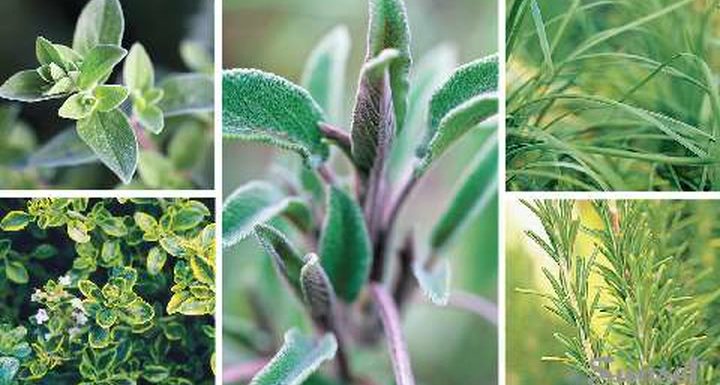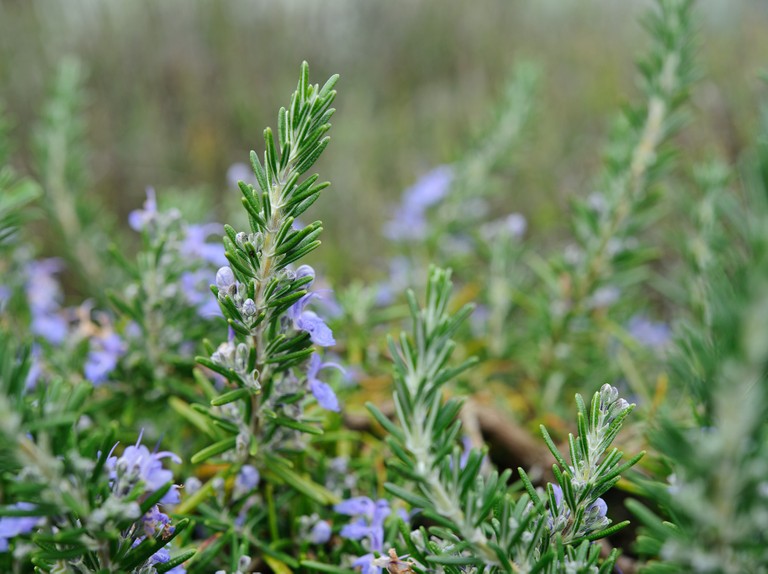
Rosemary, with the scientific name Rosmarinus officinalis, is a very popular aromatic plant for its many beneficial properties and pleasant smell. However, although we all know this plant or have ever heard of it, few know that there are a large number of types of rosemary.
If you want to learn more about the different types of rosemary, keep reading us in this article. Do not miss the opportunity to give life and a pleasant aroma both to your home and to your dishes.
Types of rosemary

To begin with, it is important to divide the types of rosemary between two large groups: the creeping rosemary and the vertical growing one. And what is the difference between rosemary and creeping rosemary? The upright bush rosemary develops as a small bush, in the form of a typical bush, and the creeping rosemary acts more by spreading low, like a ground cover. These are the main types of rosemary:
Salem
This vertical rosemary is characterized by its small blue flowers, in addition to its great capacity for growth, which makes it serve both as an ornamental plant and to form hedges. It can reach up to one meter in height and in diameter. It needs a lot of suns and more humidity than other varieties, as well as well-drained soil.
Blue boy
The Blue Boy is creeping rosemary that rarely exceeds 5 cm in height. It produces blue flowers like most varieties, edible, as well as particularly aromatic leaves. It can live for several decades in the right conditions, being very little demanding in terms of water.
Spice Island
Rosemary from the island of spices reaches heights of more than 70 cm, which is why it is commonly used for hedges or small topiaries. It is one of the spiciest types of rosemary to cook with, so it should be used with care if you are not used to it as a spice, although of course, it is perfectly edible and highly appreciated.
Prostrate
Another type of creeping rosemary, although in this case, it is common to grow it in baskets and other hanging containers. It is a variety of hanging rosemary that grows best in hot climates, requiring a large amount of light.
Arp
Arp is rosemary that stands out above all for its great resistance to cold, being one of the varieties that supports the lowest temperatures. It gets its name from the editor of the Arp town newspaper, which also had the same name.
Joyce de Baggio
It is also called Golden Rain or Golden Rain. It is rosemary that partly lives up to its name, with leaves that turn bright yellow in spring and autumn, although in summer they regain their healthy dark green.
Other types of rosemary
There are more varieties of rosemary in addition to the ones we just saw in depth. This is a list with some of their names:
- Creeping
- Dancing Waters
- Madeline hill
- Pine scented
- Pink
- Upright
- White
Rosemary characteristics
The Rosmarinus officinalis plant belongs to the Lamiaceae family and has its origin in the Mediterranean area, where it grows naturally from the coast to altitudes of about 1,500 meters. These are the main characteristics of rosemary:
- It has deep and very resistant roots.
- The creeping or erect stem, sometimes behaving both ways.
- Rosemary flowers are almost always purplish-blue in color and appear practically all year round.
- The rosemary fruit looks like four small dark nuts, at the bottom of the chalice.
- It is widely used as a spice culinary.
- Numerous medicinal and beneficial properties are also attributed to it.
To get to know it better, we recommend you read these other Green Ecology articles about Rosemary: properties, what it is for and how to prepare it, as well as Rosemary Oil: what it is for and how it is prepared.
Rosemary care
Rosemary is a plant that, in general, is quite rustic in all its varieties. However, to be able to enjoy a plant in good health, it is better to know its specific needs. These are the requirements for growing rosemary:
- Light: it needs a lot of sun, direct incidence even in hot climates.
- Climate: it supports the coast without problems. It requires warm temperatures, only some varieties better tolerate temperatures below 15 ºC.
- Irrigation: it needs little irrigation, supporting drought better than waterlogging, the latter being fatal. It only needs more water in the flowering season or when it is very young.
- Soil or substrate: it is not demanding in terms of nutrients, but it is essential that the soil offers the best possible drainage. In a pot, it is recommended to use coconut fiber in the mixture, as well as perlite and vermiculite.
- Fertilizer: it does not need much, a contribution of organic matter or annual fertilizer will be enough.
- Pruning: maintenance only, removing parts in poor condition. We tell you more about when and how to prune rosemary in this link.
- Rosemary diseases: special care must be taken with rot and mold due to excess moisture. Aphid could appear.
- Multiplication: it is easy by cutting and by division of the plant.

